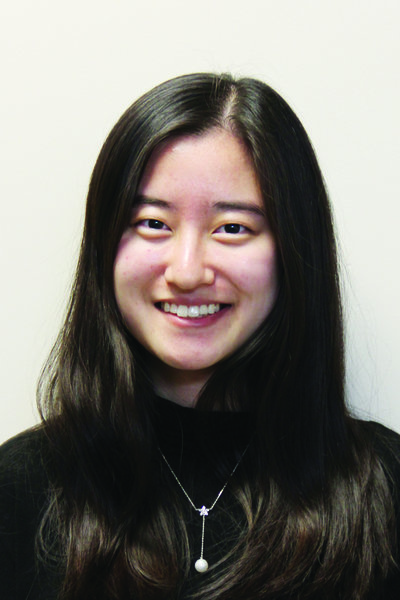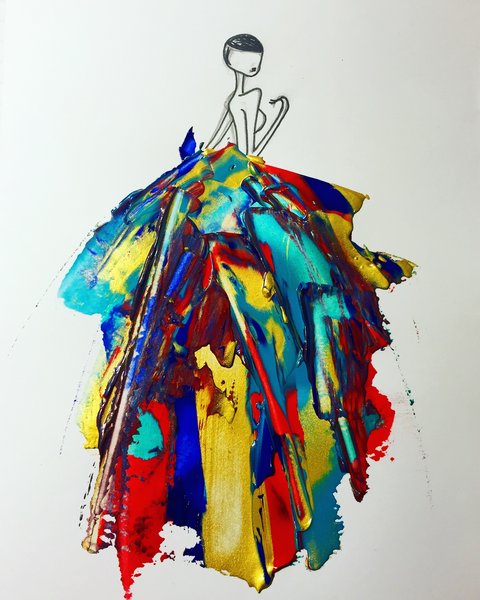Although visual arts have historically been gendered as a feminine pursuit, making them more socially acceptable for girls to explore their creativity than boys, a clear gender imbalance exists among the top figures of the industry, with male artists receiving more representation than women. To counter this inequality, Julia Rothman, co-founder of Women Who Draw, created an online directory of female* professional artists. After enlisting the help of co-founder Wendy MacNaughton, the pair developed the platform in order to increase the visibility of female illustrators, emphasizing female illustrators of colour, LBTQ+, and other minority groups of female illustrators. Inspiration from the site came after noticing a disparity of female representation in mainstream media sources.
“We counted a certain magazine that often has illustrated covers, and noticed that in the past 55 covers, only four were by women,” Rothman said, in an interview with the BBC.
While McGill is globally known for its contributions to science and medical research, there exists a cozy but thriving community for visual artists on campus. The McGill Tribune spoke with three female artists from this community to discuss how their creative journeys have informed their lives.
Kelly Luo

Kelly Luo, U3 Arts, can trace her initial fascination with drawing back to her childhood, when she would scribble with crayons and markers at the age of three. Luo began working with ink and pen around the age of 13, which is when her style began to develop. Over time, Luo has observed the patterns in her style and now feels motivated to consciously develop them.
“I think […] my style has gotten more consistent,” Luo said. “For example, I’m very detail-oriented. I like realism. But I’m making an active effort to be more surrealist.”
[metaslider id=51659]
Because of her inclination toward geometry and symmetry, a lot of Luo’s work involves cityscapes. At the same time, Luo has discovered that many of her works also convey a distinct mood.
“I really like the melancholy, intimate kind of drawing. I love to draw the same theme of someone looking, an onlooker [to capture] the feeling of taking part in life, but also being away from it,” Luo said.
Luo advises young artists to not shy away from learning by imitation. In fact, she believes imitation helps emerging artists understand why and how someone produced the work they did, which can be crucial to refining one’s own style.
“I think a lot of people when they start to draw, especially when they are older or don’t have much creative experience, are apprehensive of mimicry,” Luo said. “They don’t want to copy someone because they think it’s wrong, […] but the best artists in the last hundreds of years learned by imitation. There’s no shame in admiring someone else's work and trying to recreate it.”
Pauline Chi

While she had an interest in art as a child, taking high school art and design classes allowed Pauline Chi, U2 Science, to extensively experiment with her style. One component of her design class was to depict the same object through multiple mediums to see which one allows the most freedom of expression.
“[The course requirement] helped me figure out which medium to use and in which configuration [depending on the work I’m creating],” Chi said. “I mostly […] use acrylic or pencil because they’re the most convenient. Oil painting takes more time, but it gives more details. So it really depends on what the purpose of my painting is. If I’m trying to depict an abstract idea, I go for acrylic. But […] I use oil for portraits.”
[metaslider id=51657]
Creating art is mostly a solitary process for Chi. She finds it to be a fulfilling experience as it serves as an emotional outlet.
“I need a very quiet environment [to work in],” Chi said. “[Painting] is my way of putting my emotions into paint and lines. For me, it’s actually something really private. While I post some of my work on social media, I have paintings that are more narrative, almost like a personal diary.”
When Chi was about to begin university, she considered studying fine arts, but ultimately decided against it.
“I’m not doing fine arts because the biggest challenge would be that when you treat it as a job, you can’t wait for ideas to come to you. You have to push yourself. It feels less like a creative process.”
Chi’s biggest takeaway from her artistic journey is to have faith in her own course of artistic development, especially when it looks different from someone else’s.
“Don’t try to compare your progress with others because art means different things for different people and because each person has their [way] own of learning,” Chi said. “The feeling that other creative people are living the life you want is a very toxic one. Don’t focus on them, and just keep painting.”
Sinthusha Kandiah

In CEGEP, Sinthusha Kandiah, U3 Science, had her teacher encourage her to make her passion more than a hobby. Now, while she is not pursuing visual arts at McGill, she is paving her own path with her artwork.
“As a first-generation immigrant and a woman of colour [from the Tamil community], I face a lot of difficulties,” Kandiah said. “[….] But my dream is to fuse my passion of art with science. I really want to become a medical illustrator.”
At the age of 17, Kandiah’s passion for art led her to envision and start the Divinart Foundation. The organization raises money by providing henna services and custom art to assist communities in need in Sri Lanka, her country of origin.
[metaslider id=51658]
“Starting to apply [henna] on paper, then on skin, gave me a way to stay connected to my culture, as well as help me improve the lives of struggling children back home in Sri Lanka,” she said.
Kandiah remarks that, at first, her loved ones were ambivalent about her ambitions.
“[People close to me] would say, ‘You’re a woman, how are you going to do this alone?’ However, through my journey, I’ve [learned] to not let the pressure of setting the path for my future generations get in the way,” she said. “I’ve convinced my loved ones that following your passion is right. That opportunities will open up if you put your heart and soul into it.”
Kandiah advises her Tamil community and other immigrants to be fearless with their goals.
“Go ahead with what you want to do in life,” Kandiah said. “You don’t want to wake up not wanting to go to work. You want to wake up because what you work in motivates you and makes you happy.”
*Women Who Draw is trans-inclusive and includes women, trans, and gender non-conforming illustrators.









